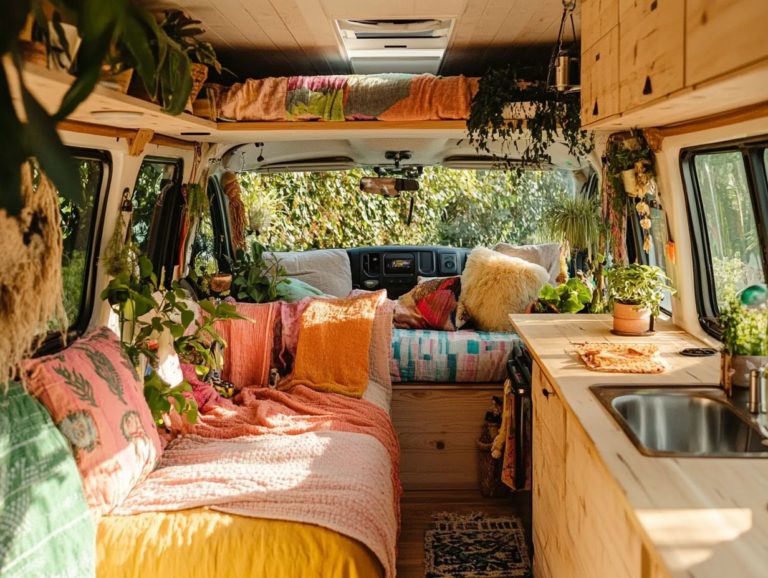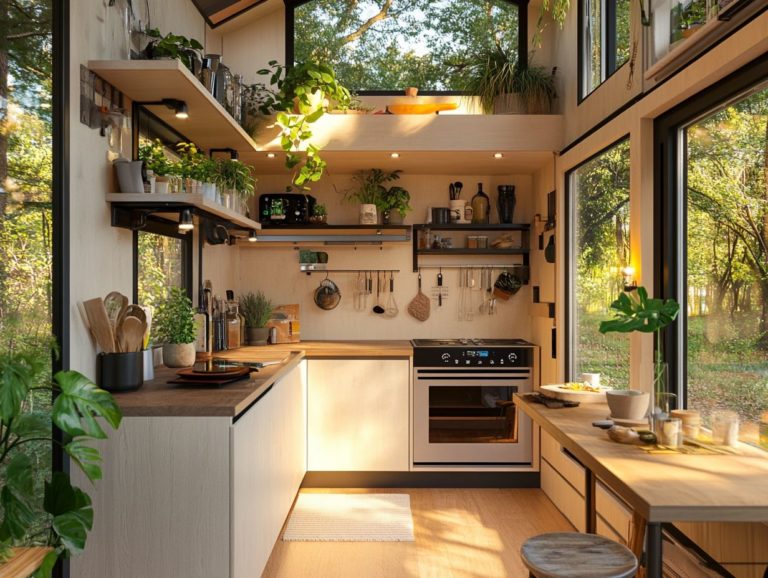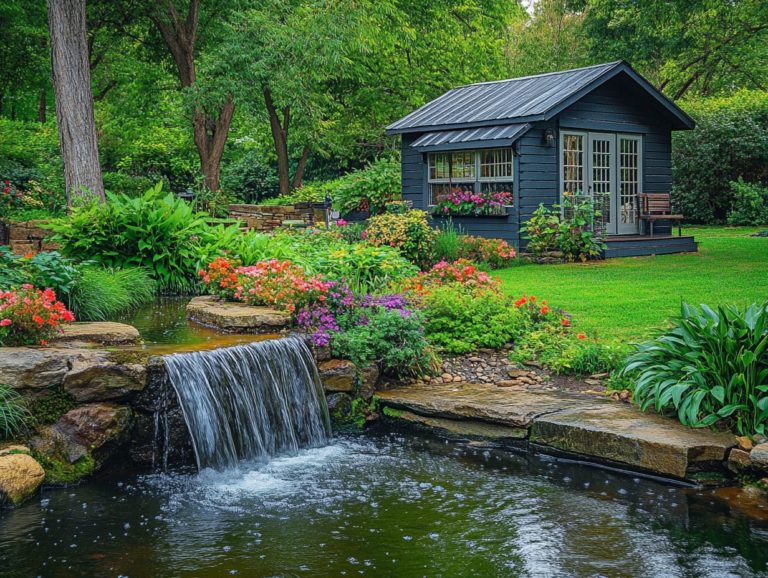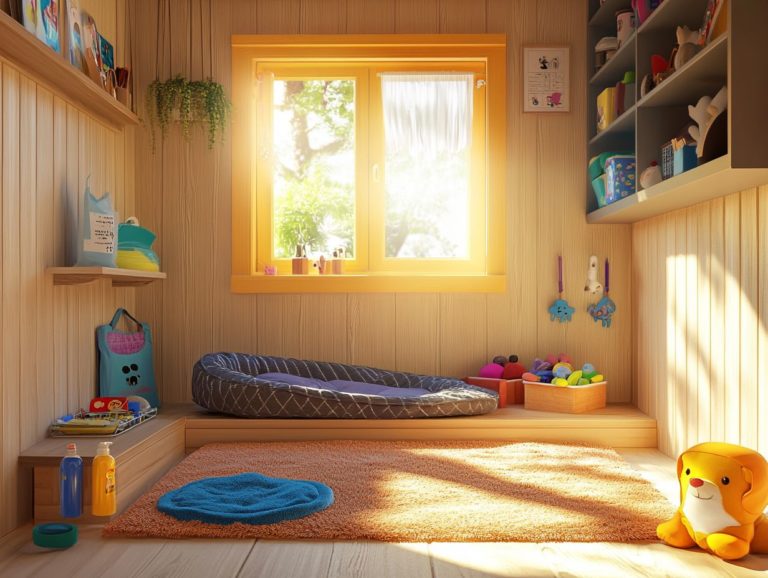DIY Tiny House Safety Features to Consider
Building or residing in a tiny house presents a distinctive lifestyle choice. However, it brings its own set of safety challenges.
From fire hazards to security issues and weather-related risks, ensuring a secure environment is imperative.
This article delves into essential design considerations for tiny houses, effective fire safety measures, and security features to shield against intruders. It also covers weatherproofing techniques to uphold structural integrity.
You ll also find a practical safety checklist designed for tiny house owners. Explore these insights to transform your compact living space into a safe haven.
Contents
- Key Takeaways:
- Designing for Safety
- Fire Safety Measures
- Security Features for Tiny Houses
- Weatherproofing Techniques
- Safety Checklist for Tiny House Owners
- Frequently Asked Questions
- What are some key safety features to consider when building a DIY tiny house?
- How can I ensure my DIY tiny house is well-ventilated?
- What should I keep in mind when designing the structure of my DIY tiny house?
- What fire safety measures should I include in my DIY tiny house?
- Is it necessary to have a professional inspect my DIY tiny house for safety?
- What other safety features can I include in my DIY tiny house?
Key Takeaways:
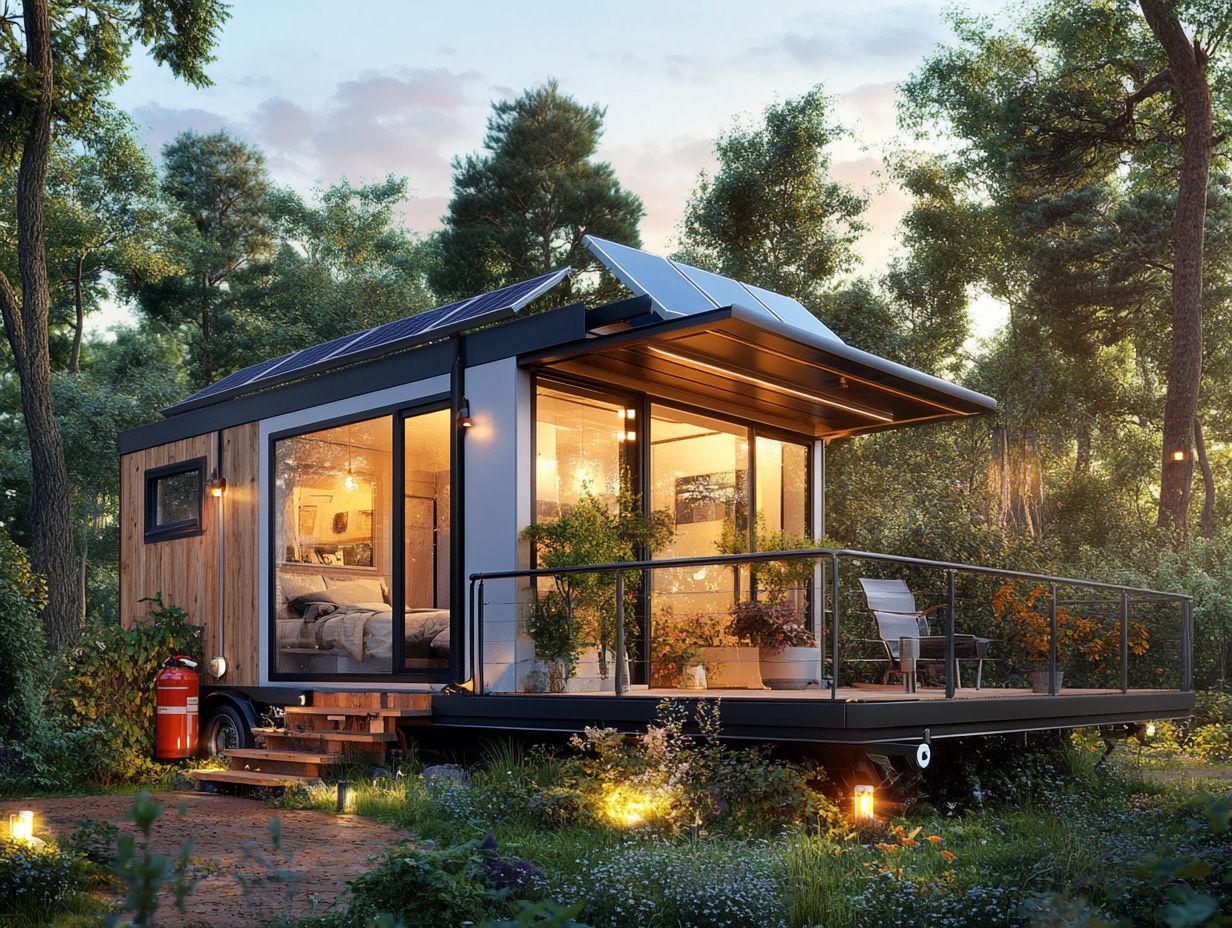
- Prioritize safety in the design and construction of your tiny house by considering key factors such as fire prevention, weatherproofing, and security measures.
- Implement fire safety measures like smoke detectors, fire extinguishers, and escape routes to prevent and respond to fires effectively.
- Protect your tiny house from intruders and theft with secure locks, motion-activated lights, and security cameras. Regularly review and update your security measures.
Why Safety is Important for Tiny Houses
Safety is paramount in tiny houses. The charm of minimalist living comes with the responsibility of strict safety considerations to protect your well-being.
Living in such close quarters requires you to prioritize emergency preparedness. You must be ready for potential hazards, like fires or natural disasters, meaning having clear evacuation plans and knowing where all emergency exits are located.
Following building rules ensures structural integrity and acts as a roadmap for your safety. It guarantees that the materials you use are both appropriate and durable. Securing sufficient insurance coverage is essential for protecting yourself against financial loss and damage, giving you peace of mind.
Don t underestimate the power of community support. Engaging with neighbors can enhance safety through shared resources and knowledge about successful builds, fostering an environment that values collective responsibility.
Designing for Safety
Designing for safety in tiny houses is essential. It creates a secure environment that harmonizes compact living with health and safety standards.
Thoughtful planning in your tiny house construction should involve selecting building materials that meet safety requirements and support structural integrity and energy efficiency. To ensure compliance with regulations, it’s essential to understand DIY tiny house building codes. This approach allows you to enjoy a comfortable and secure lifestyle.
Incorporating fire safety measures and effective organization enhances the safety of your home. Having a solid grasp of zoning laws and building codes is vital for achieving a well-designed tiny home. For those interested in constructing their own space, following tips for successful DIY tiny house construction can help prioritize safety while showcasing appealing aesthetics.
Key Considerations for Safe Design
When designing tiny houses, key considerations for safe design include following building rules, ensuring structural integrity, and maintaining high air quality within your living space. These elements enhance the overall safety of your tiny house and elevate the comfort and well-being of everyone who calls it home.
Navigating these guidelines is essential as they dictate everything from the materials used to height restrictions, impacting the sturdiness of your home. Effective ventilation systems prevent moisture buildup and foster a healthy indoor environment. A well-ventilated tiny house eliminates unpleasant odors and reduces the risk of mold, which can lead to serious health concerns.
Transform your tiny house into a true sanctuary by thoughtfully integrating design elements that prioritize safety. You can create a space that fulfills your functional needs while embracing a sustainable and minimalist lifestyle.
Start implementing these safety measures today and make your tiny house a secure haven!
Fire Safety Measures
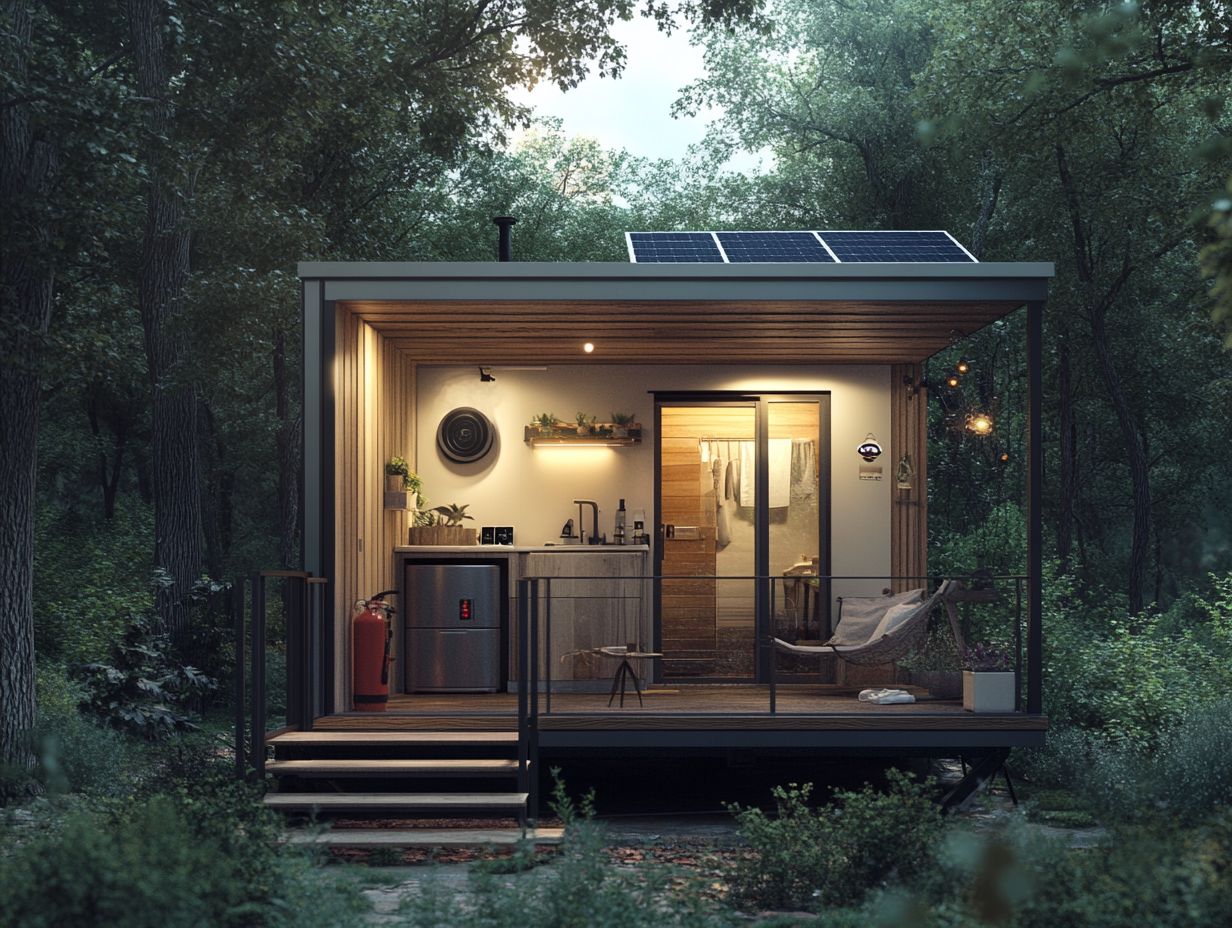
Implementing fire safety measures in tiny houses is essential to prevent devastating incidents, particularly due to their compact nature. You must install crucial components like smoke detectors and carbon monoxide detectors to ensure early warnings in emergencies.
Choosing the right heating systems and adhering to safety protocols for maintenance inspections can significantly lower fire risks. Creating comprehensive emergency preparedness plans, including an emergency kit and regular safety drills, elevates the safety of everyone living there.
By taking these proactive steps, you can effectively mitigate fire hazards and cultivate a secure living environment.
Preventing and Responding to Fires
Preventing and responding to fires in tiny houses requires a thoughtful, varied approach that encompasses effective fire safety protocols. Establishing a solid maintenance schedule for your fire safety equipment think alarm systems and extinguishers is essential for ensuring they function optimally!
Regular inspections are just the beginning. Consider integrating smart technology, which are devices that connect to the internet and can send alerts to your smartphone, that can alert you to potential hazards in real-time. It s also crucial for you and everyone living there to grasp the importance of maintaining clear escape routes and practicing regular fire drills. This can significantly enhance awareness and reaction times during an emergency.
Local fire departments often offer workshops specifically designed for small living spaces, equipping you with essential strategies and detailed checklists. Collaborating with community organizations opens doors to resources like grants or subsidized safety equipment, ensuring that your tiny home remains a true safe haven.
Security Features for Tiny Houses
Incorporating security features in tiny houses is essential for ensuring both personal safety and peace of mind. Consider advanced security systems, motion-activated lighting, and reinforced doors and windows all of which work together to deter potential intruders.
Community advocacy and support are vital in enhancing the overall security of tiny house neighborhoods, fostering an environment where residents feel both safe and connected.
By prioritizing security, you can fully embrace the benefits of minimalist living without compromising your safety.
Protecting Against Intruders and Theft
Protecting against intruders and theft in your tiny house requires a comprehensive approach that seamlessly combines effective security measures with the support of your community. By utilizing alarm systems, security cameras, and robust door locks, you can significantly enhance your home s defenses against unauthorized access.
Engaging in community initiatives focused on safety fosters a sense of collective responsibility among residents, further deterring any potential criminal activities. It s equally important to ensure you have adequate insurance coverage to mitigate potential losses from theft, giving you peace of mind as you embrace your compact lifestyle.
Integrating these elements creates a varied security strategy where technology and community engagement work in perfect harmony. Alarm systems equipped with motion sensors can alert you to any suspicious activity, while high-definition security cameras serve as a visual deterrent, capturing evidence if necessary.
Beyond technology, participating in neighborhoods that hold regular safety meetings or establish watch programs can cultivate stronger bonds among residents, ensuring vigilance against potential threats.
Comprehensive insurance coverage not only provides financial support but also complements these security measures by protecting you against unforeseen circumstances. This way, you can live confidently and peacefully in your minimalist abode.
Take these steps today to create a safer space!
Weatherproofing Techniques
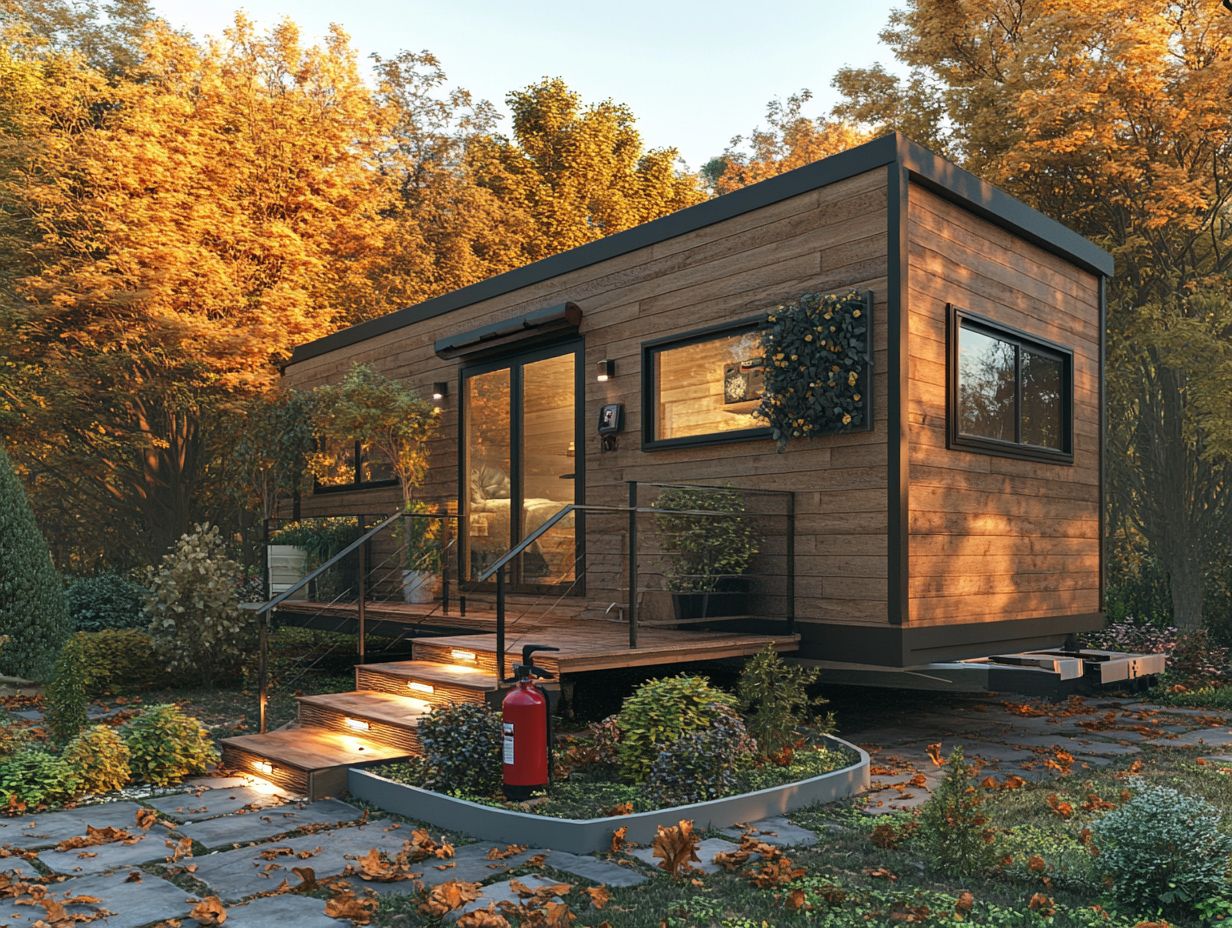
Weatherproofing techniques in tiny houses are essential for preserving structural integrity and creating a safe, comfortable living environment during extreme weather events. By choosing high-quality building materials and effective weatherproofing strategies, you can significantly boost your tiny home s resilience against harsh environmental challenges.
Integrate renewable energy solutions to boost your tiny house s ability to withstand adverse weather, ensuring you have sustainable power options even during outages. It s also crucial to develop detailed plans for emergencies that take potential weather-related emergencies into account, ensuring the safety and well-being of all occupants.
Ensuring Structural Integrity in Extreme Weather
Ensuring structural integrity in extreme weather conditions is paramount for you as a tiny house owner, directly influencing your safety and comfort. By adhering to building codes and implementing effective weatherproofing strategies, you can significantly enhance your home s resilience against the elements.
These measures not only shield your physical structure but also keep everyone living there safe and comfortable. Establishing strong connections with local emergency services ensures that you can get timely assistance during severe weather events. A supportive community can create a network rich in shared resources and knowledge.
Participating in workshops focused on emergency preparedness and weatherproofing gives you the power to take proactive measures, transforming you from a passive occupant into an active guardian of your home. By embracing both individual responsibility and communal support, you can find peace of mind in your ability to withstand unpredictable weather while cherishing the freedom that your lifestyle brings.
Safety Checklist for Tiny House Owners
Make sure your checklist includes key items like regular maintenance inspections, the availability of an emergency kit, and adherence to safety guidelines designed to enhance your personal safety.
- Regular maintenance inspections
- Emergency kit availability
- Adherence to safety guidelines
By methodically reviewing these components, you can proactively pinpoint and mitigate potential hazards, leading to a safer and more enjoyable living experience. Keeping this checklist up to date will also aid you in planning for emergencies and managing routine maintenance effectively.
Important Precautions to Take
Important precautions to consider in tiny houses involve a comprehensive set of safety tips designed to ensure the well-being of everyone, including your pets. Establishing a maintenance schedule for all systems, from plumbing to electrical, is crucial for preventing issues that could compromise safety.
You should have emergency preparedness plans that cover various scenarios, ensuring that all residents are equipped for potential emergencies, including resources for health conditions. If you have pets, incorporating safety measures for them is essential, contributing to a secure living environment.
As a tiny house owner, you must remain vigilant about fire safety. Equip your space with smoke detectors, carbon monoxide alarms, and fire extinguishers placed conveniently in key areas. Additionally, consider learning how to build a tiny house fire escape. Regularly checking these devices is advisable to ensure they function correctly.
The unique layout of tiny homes requires attention to ventilation and air quality. Regularly monitor humidity levels and consider using air purifiers. Adequate storage solutions that prevent clutter are critical, as clutter can lead to accidents and create a stressful atmosphere.
Engaging with local tiny house communities can also provide valuable insights into best practices, allowing you to share experiences that enhance your overall well-being and safety.
Frequently Asked Questions
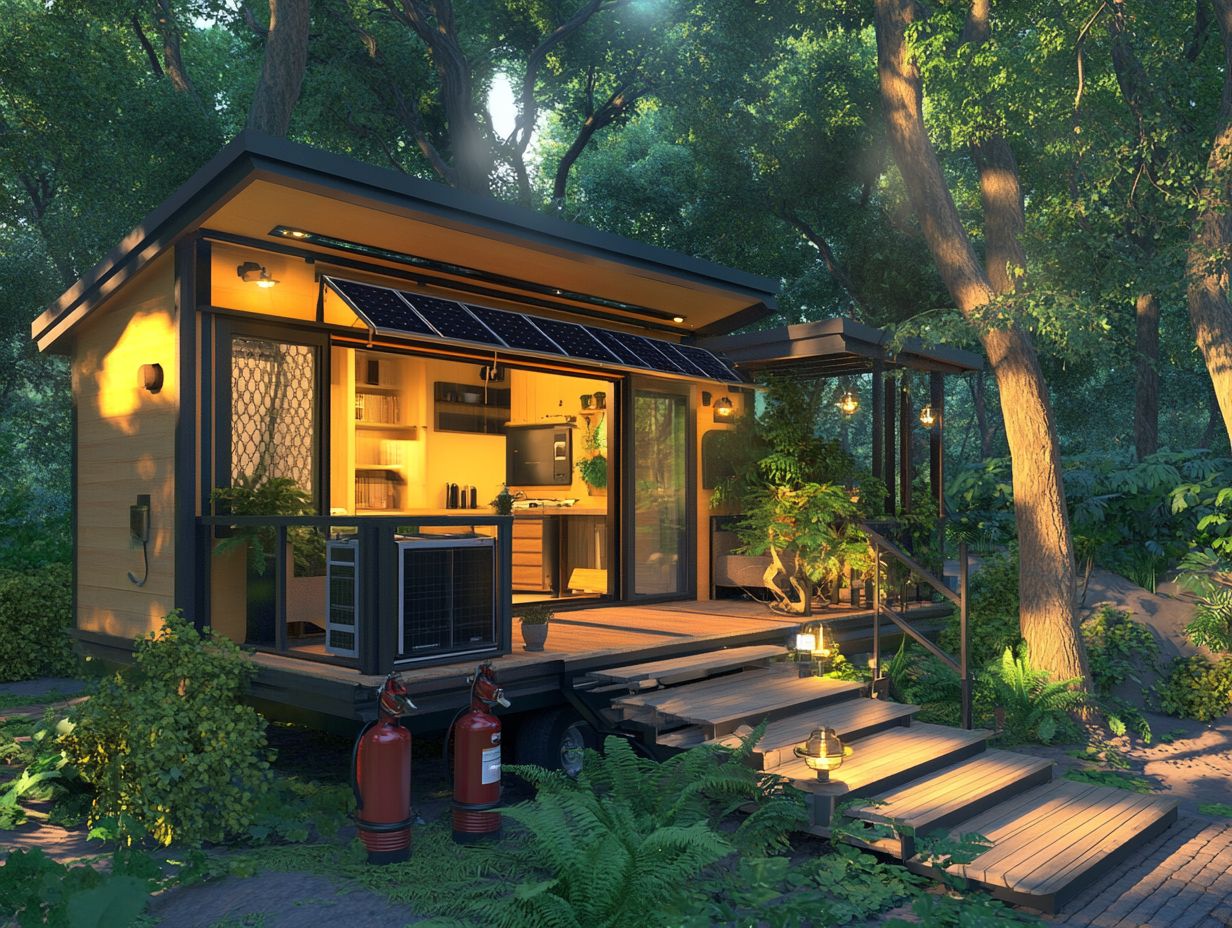
What should I include in my emergency kit for my tiny house?
Make sure to have essentials like first aid supplies, non-perishable food, water, and important documents.
What are some key safety features to consider when building a DIY tiny house?
Consider fire safety measures, adequate ventilation, and sturdy structural design.
Also, ensure you have proper electrical wiring.
How can I ensure my DIY tiny house is well-ventilated?
Install windows, skylights, and a ventilation fan for good airflow.
Using non-toxic building materials can improve your indoor air quality.
What should I keep in mind when designing the structure of my DIY tiny house?
Use sturdy materials and secure the walls and roof with special straps.
Follow building codes to guarantee structural safety.
What fire safety measures should I include in my DIY tiny house?
Install smoke and carbon monoxide detectors.
Keep a fire extinguisher handy and choose fire-resistant building materials.
Is it necessary to have a professional inspect my DIY tiny house for safety?
While not always required by law, having a professional inspection is highly recommended.
They will ensure that all safety features are effective.
What other safety features can I include in my DIY tiny house?
Consider adding a security system and incorporating slip-resistant flooring.
Always keep a first aid kit accessible and ensure emergency exits are clear.

